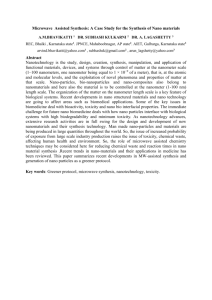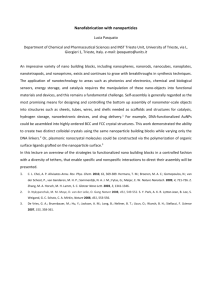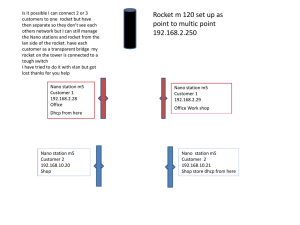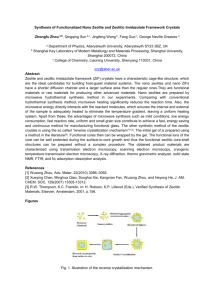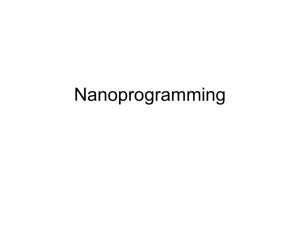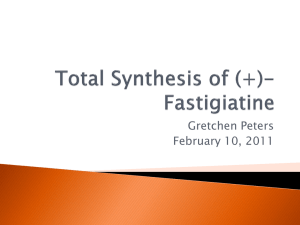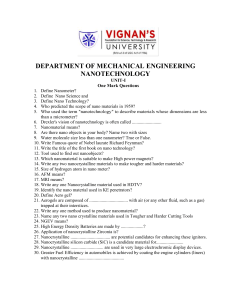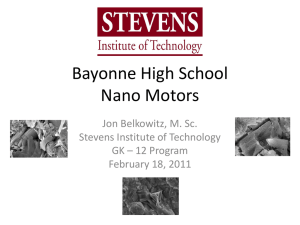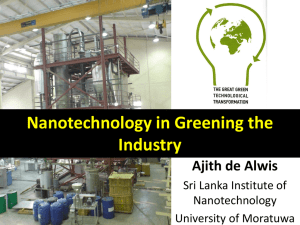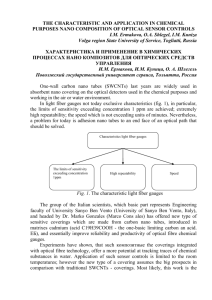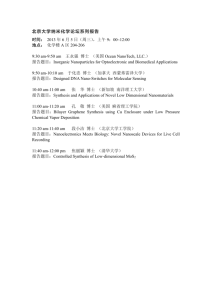BIU Syllabus on Nano-science and nano-technology
advertisement
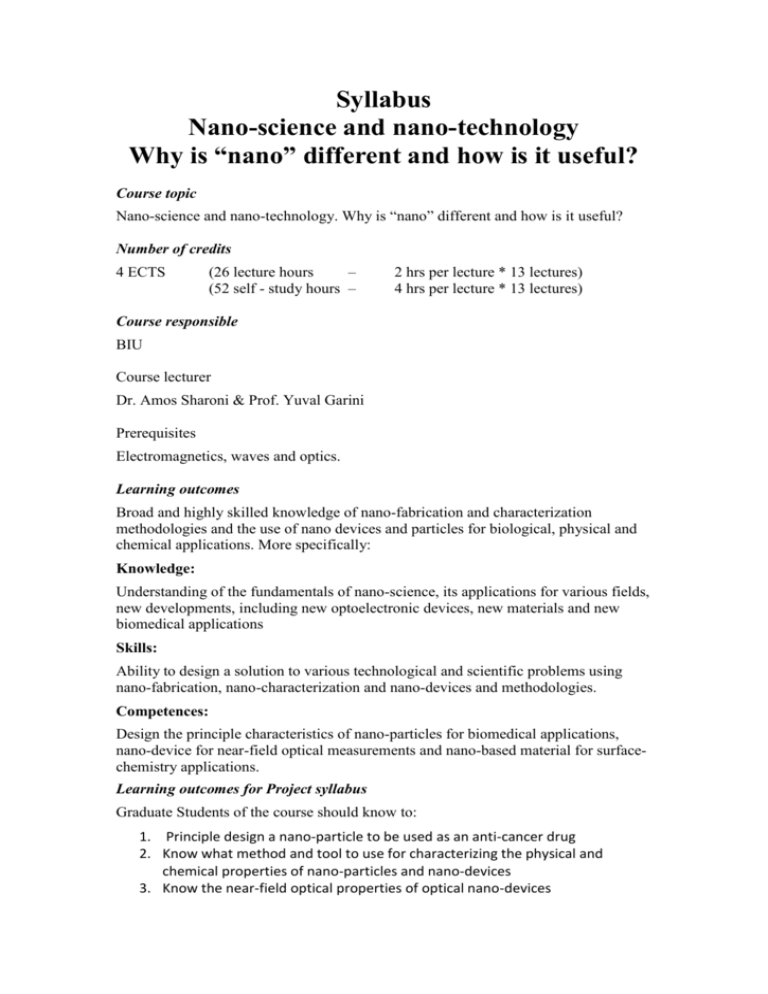
Syllabus Nano-science and nano-technology Why is “nano” different and how is it useful? Course topic Nano-science and nano-technology. Why is “nano” different and how is it useful? Number of credits 4 ECTS (26 lecture hours – (52 self - study hours – 2 hrs per lecture * 13 lectures) 4 hrs per lecture * 13 lectures) Course responsible BIU Course lecturer Dr. Amos Sharoni & Prof. Yuval Garini Prerequisites Electromagnetics, waves and optics. Learning outcomes Broad and highly skilled knowledge of nano-fabrication and characterization methodologies and the use of nano devices and particles for biological, physical and chemical applications. More specifically: Knowledge: Understanding of the fundamentals of nano-science, its applications for various fields, new developments, including new optoelectronic devices, new materials and new biomedical applications Skills: Ability to design a solution to various technological and scientific problems using nano-fabrication, nano-characterization and nano-devices and methodologies. Competences: Design the principle characteristics of nano-particles for biomedical applications, nano-device for near-field optical measurements and nano-based material for surfacechemistry applications. Learning outcomes for Project syllabus Graduate Students of the course should know to: 1. Principle design a nano-particle to be used as an anti-cancer drug 2. Know what method and tool to use for characterizing the physical and chemical properties of nano-particles and nano-devices 3. Know the near-field optical properties of optical nano-devices 4. Know the principles of nano particles fabrication by top-bottom and bottomtop methods Abstract The course covers the fundamentals of nano-science and nano-technology. Students will learn the physical and chemical basics of nano-particles and nano-devices. They will learn the optical properties, electronic properties and chemical properties of these devices. They will learn the most common manufacturing methods. Finally, they will learn about application of nano science and technology for various applications in the bio-medical, physical and chemical fields. Content 1. Introduction to nanoscience a. What is nanoscience? brief history, nano effects on energy, machinery miniaturization, nano manipulation, nano optics. 2. Electron properties – from single atoms to bulk. The infinite quantum well, hydrogen atom, bulk materials, 3D, 2D, 1D structures, density of states in all dimensions, quantum dots, excitons. 3. Optical properties of nanostructures and Plasmons, photonic band gap, plasmons, near-field effect, hole-array 4. The scope of nanomaterial chemistry. Nanoscale and colloidal systems. Fundamentals of surface and interfacial chemistry, monolayers and self assembly, micelles and microemulaions (structure and properties). Supramolecular chemistry , classification of nanomaterials 5. Physical, chemical and regulatory risk aspects in nanotechnology 6. Synthesis of nanostructured materials Bottom-up vs. top-down synthesis, template-based synthesis, Sol-gel chemistry, electrochemical synthesis, sonochemistry and solvothermal synthesis solutions techniques, CVD, metal nanoparticles synthesis, Core-Shell Nanocrystals, Nanospolymers, Lithography, Layer-by-layer synthesis, Chemical functionalization 7. Specialized Techniques for Characterizing anomaterials Electron microcopy (TEM and SEM), X-ray diffraction, Infrared spectroscopy of nanoassemblies. Attenuated-total reflection (ATR) and grazing incidence angle techniques, Surface enhanced Raman spectroscopy (SERS). QCM, ellipsometry. Microcalorimetry methods (DSC and ITC ) for Nanomaterials Characterization tools: Scanning methods Scanning tunneling microscope, Atomic force microscopy, Near field microscopy 8. Biological-related methods & Introduction to Biology 9. High resolution microscopy methods The diffraction limit of light, point spread function (PSF), optical transfer function (OTF), Improved methods including: confocal microscope, n-photon, structured illumination, saturation emission depletion (STED), photo activation light microscope (PALM). 10. The physics of single magnetic domains: the Stoner-Wohlfarth model. Electric properties of nanostructures 11. Chemistry applications: Solar energy harvesting, High Energy Density Batteries, High-Sensitivity Sensors, nanomaterials in catalysis 12. Application of nanoparticles in biology & medicine 13. Optical tweezers, TPM, Magnetic tweezers, Lab on a chip (LOC), Fluorescence resonance energy transfer (FRET), description of the methods, principles, capabilities and limitations Teaching methods The course is presented in the Moodle learning environment in the form of Oral lectures combined with Power Point Presentation Assessment The course grade consists of these components: 50% - Knowledge test with multiple choice questionnaire 50% - Final Project
